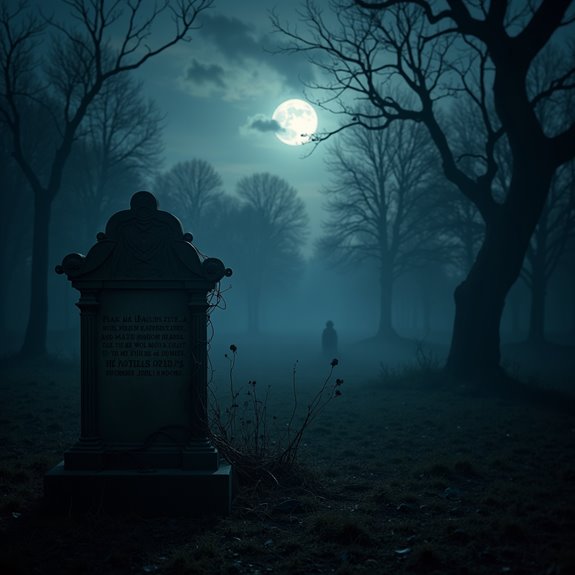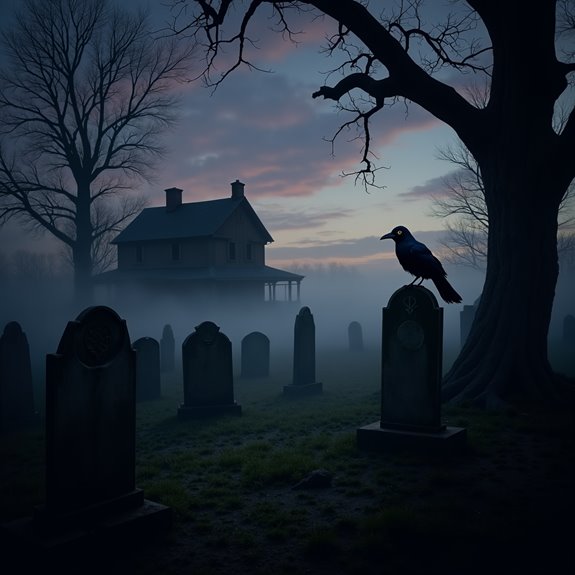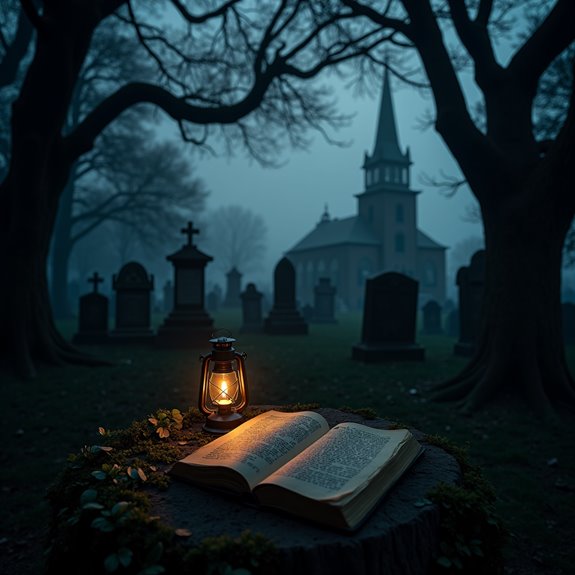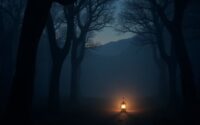Did a Vampire Once Roam New England?
The idea of a vampire haunting New England isn’t merely a figment of imagination; it’s woven into the region’s history. Colonial fears, harsh winters, and stories of figures like Mercy Brown underscore the eerie folklore that took root during times of crisis. These tales reveal deeper truths about communities grappling with loss and uncertainty. What drove people to believe in such dark legends, and how did these fears shape their reality? These regional myths reached a fever pitch in the 19th century, particularly during the real vampire panic in Rhode Island, where families exhumed their deceased in desperate attempts to confront their fears. This panic reflected a collective anxiety, driven by disease and death, revealing how deeply embedded these supernatural beliefs were in daily life. Ultimately, the stories of vampires became not just legends, but a lens through which to understand and process the profound challenges of their times.
Introduction

Though often relegated to the domain of fiction, the lore of vampires has a fascinating history in New England, where tales of the undead have shaped local folklore and community identities. Settlers from Europe brought their superstitions and folklore, crafting an atmosphere ripe for vampire myths to flourish. These stories often emerged during times of disease and death, prompting communities to seek explanations for the unexplainable. In the minds of the fearful, vampires became symbolic of their struggles and fears. The region’s chilling landscapes and harsh winters further fueled these narratives, offering a backdrop that seemed to invite the supernatural. As whispered legends spread, they forged a unique cultural identity, emphasizing the intertwining of myth and reality within New England’s historical tapestry.
Vampires in Colonial Folklore

As settlers established their communities in New England, the harsh realities of life often spurred beliefs in supernatural beings, particularly vampires. These fears stemmed from a lack of understanding regarding disease and death in an era plagued by smallpox and tuberculosis. Stories of the undead quickly spread, intertwining with existing European folklore. Villagers warned of bloodsuckers who rose from graves, whispering tales around the fire. The darkness of night became synonymous with danger, fueling anxiety over a lurking vampire. By incorporating old-world superstitions with colonial experiences, communities created rich narratives to explain their hardships. These folkloric tales served as both cautionary messages and coping mechanisms, ultimately shaping the cultural landscape of New England in the 18th century.
Notable Cases or Sightings

Reports of notable vampire sightings in New England often sent shivers down the spines of local residents. In the early 18th century, the infamous case of Mercy Brown in Rhode Island stirred intense fear. After her family members fell ill and died, townsfolk exhumed her body, discovering it seemingly intact. They declared her a vampire and staked her heart. Another chilling sighting occurred in 1930s Massachusetts, where a man claimed to witness a dark figure gliding through a cemetery. Locals described unusual occurrences, including livestock going missing. Even in modern times, stories circulate about shadowy figures lurking in the woods. These incidents reveal how deeply rooted vampire lore continues to grip the imagination of those who inhabit the eerie landscapes of New England.
Common Theories or Explanations
While vampire lore has captivated audiences for centuries, several theories attempt to explain the persistent beliefs surrounding these creatures in New England. One theory suggests that tuberculosis epidemics in the 18th and 19th centuries led families to believe that their loved ones were being drained of life, mistakenly attributing this to vampire activity. Another explanation hinges on the high infant mortality rates, prompting superstitions surrounding the dead rising to harm the living. Additionally, cultural influences from European immigration may have reinforced these narratives, merging local folklore with imported vampire myths. Ultimately, the association of darkness and death with vampires played into the collective fears of these communities, amplifying reports and sightings throughout the region.
Frequently Asked Questions
What Historical Evidence Supports Vampire Sightings in New England?
Historical accounts mention reports of mysterious deaths, grave disturbances, and the rise of folklore in communities. Local newspapers from the 19th century detailed unusual occurrences, contributing to the eerie tales that surrounded vampire sightings in New England.
Are There Any Modern Vampire Cults in New England Today?
In New England today, several modern vampire cults exist, attracting individuals fascinated by the vampire mythos. Members often engage in rituals, embrace alternative lifestyles, and share a sense of community centered around their unique beliefs.
How Did the Vampire Myth Influence Literature in Colonial Times?
The vampire myth deeply influenced colonial literature, sparking fascination and fear. Writers explored themes of immortality and the supernatural, crafting chilling tales that mirrored societal anxieties, consequently embedding these creatures into the fabric of early American storytelling.
Are There Vampire-Themed Events or Tours in New England?
In New England, various vampire-themed events and tours captivate enthusiasts. They explore haunted sites and attend festivals celebrating folklore, blending history and entertainment while keeping the local mythos alive, inspiring fascination and curiosity among visitors.
How Has Popular Culture Changed Perceptions of Vampires in New England?
Popular culture’s portrayal of vampires in New England has shifted dramatically. They’ve transformed from fearsome creatures into romanticized figures, enchanting audiences through literature and film, sparking curiosity and interest in the region’s folklore and history.


